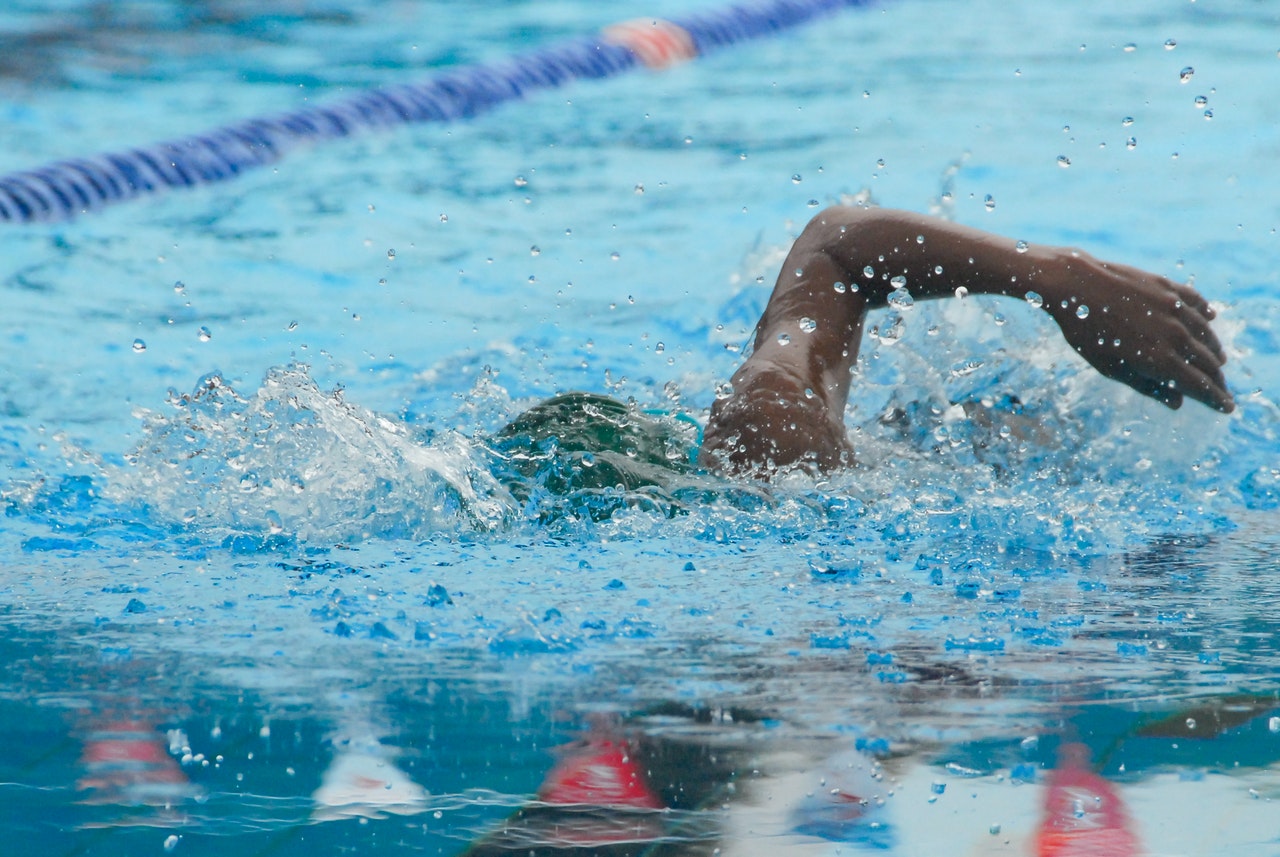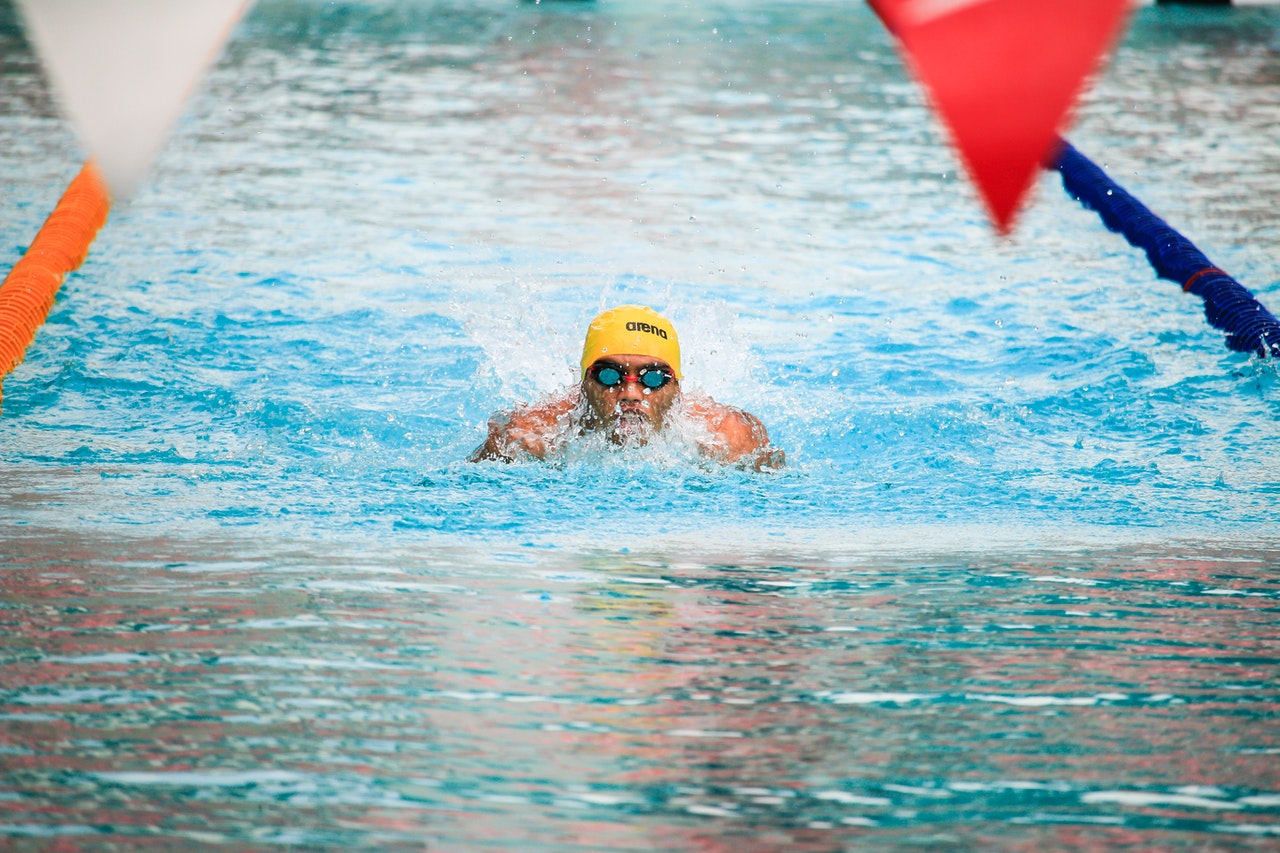Despite winning national championships in other sports, I’ve always struggled to survive. Having trouble swimming has always been one of my biggest weaknesses and sources of shame.
After one or two pool lengths each time I’ve attempted to learn how to swim, my heart rate increases to 180 or more beats per minute. It’s so awful and draining it’s beyond words.
I’m done.
I’ve progressed from a 2-length (2 x 20 yards/18.39 meters) maximum to swimming more than 40 lengths per workout in sets of two and four in less than ten days. Here’s what I did after trying everything else and how you can do it too.
A Kiwi buddy offered a New Year’s resolution challenge at the end of January: if I trained for and completed an open-water 1-kilometer event in 2008, he would abstain from caffeine and other stimulants for the entire year. I concurred.
He was a competitive swimmer growing up and persuaded me that, unlike my other harmful fitness habits (no-gi BJJ, etc.), swimming was a life skill and a pastime I should pass on to my future children. In other words, swimming was one of the most essential abilities you could ever learn.
Why then does this post not appear until eight months later? Because I read the “greatest” books, tried everything, and was still unsuccessful.
Squat boards? Test them. As someone who often excels in most kids swimming lessons, I barely moved and left feeling embarrassed.
Hand paddles test them. I will never be forgiven by my shoulders. Swimming shouldn’t be high-impact, right? Two strikes.
It went on for months before I was ready to give up. Then, at a BBQ, I ran into Chris Sacca, a former Google employee who is now an investor and triathlete in training, and I confided in him about my situation. He interrupted me before I got a chance to finish:
“I’ve got the solution to your prayers. It completely altered the way I swim.
That caught my interest.
 The Approach
The Approach
He told me about the Total Immersion (TI) technique, which is typically connected to instructor Terry Laughlin, and I immediately placed an order for the book and freestyle DVD.
I lowered my drag and water resistance by at least 50% in the first workout—I’ve never had a coach or supervision—swimming more laps than ever before in my life. I reduced my stroke rate from more over 25 per 20-yard length to an average of 11 strokes per 20-yard length by the fourth workout. Unbelievable.
In other words, I was swimming longer distances with the same number of strokes, using less energy, and doing so without fear or worry. In fact, I felt better when I got out of the water than when I was in it. I still find it hard to believe that.
I’ve included my notes from the Total Immersion book here since otherwise it would be nearly impossible to grasp the drills from the Freestyle Made Easy DVD. Because I can’t float horizontally and have a weak kick, I was actually unable to complete the exercises on pages 110 to 150. I got discouraged before the DVD allowed me to try technique with propulsion. However, the theories and explanations that follow the DVD will alter the way you perceive everything.
My Top 8 Advice for Beginners
These ideas are the ones that, for me, made the largest difference:
1) Instead of pulling with your arms or kicking with your legs, concentrate on shoulder roll and keeping your body horizontal (least resistance) to go forward with the least amount of effort. Although it seems counterintuitive, doing so is crucial because the most common advice for improving swimming is to kick harder.
2) Maintain your horizontal position by aligning your head and spine; you should be staring straight down. Drive your arm underwater rather than swimming on the surface, and adopt the same head attitude as when you’re walking. View Natalie Coughlin’s explanation at 26 seconds and Shinji Takeuchi’s underwater photographs at 49 seconds. Take note of how little Shinji uses his legs; the slight flick merely aids in turning his hips and propelling his subsequent arm ahead. This method is what enables me to use so little energy.
 An effective example of a TI crawl
An effective example of a TI crawl
3. Similar to Shinji in the aforementioned video, imagine swimming freestyle while switching sides rather than on your stomach. TI’s Wikipedia page states:
“Actively streamline” the body by purposefully maintaining a longer, sleeker bodyline than is common for human swimmers and rhythmically switching between “streamlined right side” and “streamlined left side” postures throughout the stroke cycle.
If you’ve ever bouldered or rock climbed, extending your hip means simply bringing it closer to the wall. To verify this, lean against a wall with your chest and extend your right arm as far as it will go. You will gain 3-6 inches if you turn your right hip to contact the wall and extend your right arm once more. By lengthening your vessel, you can make each stroke go farther. It quickly adds up.
4. Fully extend your arm well below your head and dip your fingertips into the water. It should be extended lower and farther than you initially imagine. Your legs will rise and the drag will be reduced thanks to the downward water pressure on your arms. You’ll feel like you’re swimming downhill almost. The video titled “Hand Position and Your Balance” may be found at the top of this page.
5. Pay more attention to improving stroke length (SL) than stroke rate (SR). Reduce the number of strokes every lap and try to glide farther on each downstroke.
6. Ignore exercises and concentrate on “practice.” Instead of working on your aerobic system, you are training your neurological system to execute counterintuitive movements well. You’re not exercising correctly if you feel stretched. Rather than pushing through the discomfort and forming harmful habits, pause and reflect.
7. To breathe, extend your arm and turn your entire body, not just your head. To prevent short gasps and oxygen debt, some triathletes may even virtually turn around and face the sky (tip from Dave Scott, 6-time Ironman world champion).
8. Try using hand switching as a drill:
While swimming, it’s challenging to recall all the technical aspects. I failed when I attempted to adhere to six regulations at once. On pages 91–92 of the TI book, the hand swapping practice is covered as the drill that made me perform most other things correctly. I learned a lot from Coach Laughlin’s views on the Russian Olympic team’s practice.
Focus on maintaining your lead arm completely extended until your other arm crosses over and pierces the water just below the forearm of the extended arm. This is the visualization I found most helpful. This compels you to swim in what is known as the “front quadrant,” encourages you to swim on your sides, and lengthens your stroke. all positive. Each lap of freestyle was reduced by 3–4 strokes with only this one workout.
Equipment and Starting Out
Are you prepared to try it? Here are some basic suggestions if swimming scares you or you simply want to experience the difference a few unconventional methods can make:
1. Men, refrain from swimming in board shorts. When I attempted it in Brazil, I had no idea that it was similar to swimming with a parachute attached to your back. Terrible. Get some Speedos in European style and streamline. Be calm on the sand, and choose speed in the water.
2. Buy quality eyewear. I currently wear Speedo Vanquisher goggles, which I find useful if a latex swim hat is worn to secure the straps. To avoid being blinded by chlorinated water, I need to adjust the nose bridge straps roughly every 100-125 meters. Leakage with all three of the goggles I tested seemed to be caused by the eye parts being spaced too far apart. The popular Aqua Sphere Kaiman swim goggles, which are easy to tighten without taking them off your head, are what I’ll be trying with.
3. Begin your practice in a short, shallow pool. Choose a pool that is no longer than 20 yards and use a lane in the shallow end (4 feet or less). I’ve since advanced to 25 yards, but I discovered that shorter pools made it simpler to concentrate on technique. I’ve gotten used to 25 yards, so once I can run 10 x 100 yards with 30-45 seconds of rest in between sets, I’ll switch to a 50-meter pool that is Olympic-sized.


